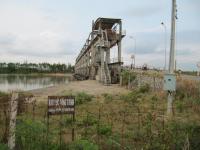MMA recently analysed the tidal regime at coastal gauges around the Vietnam Delta and carried out an initial analysis of the storm surges.
Working under subcontract to JBA, MMA recently completed a report commissioned by GIZ, in support to the Flood Management and Mitigation Programme of the Mekong River Commission (MRC) Secretariat Phnom Penh.
The importance to flood management of the influence of tidal conditions, which extend over 400km inland in the Mekong, beyond Phnom Penh has previously not been fully taken into account in simulation models. For example the operational forecast system used by the MRC utilised out dated and non-site specific tidal boundaries related to conditions in 2000. The study aims were to:
- Provide tidal harmonics for more gauge sites in the Delta, enabling the Regional Flood Model (ISIS) to better predict and represent actual tide levels for the days being simulated.
- Investigate storm surge characteristics affecting the Mekong Delta.
- Carry out initial flood simulations during larger surge events to identify priorities for further analysis, and suggest improvements.
 Using 12 years of tide gauge data over 7 sites, tidal analysis was undertaken in order to assess the underlying astronomic tide, allow its prediction, and to calculate residual storm surge characteristics. We identified two different types of storm surge affecting water levels in the region. Firstly, typhoon activity, such as from Typhoon Linda in 1997, causes increased water levels for short periods of time of several hours often primarily impacting at only one or two gauge sites. For this type of ‘classic surge’ analysis suggested that thespeed of movement of the typhoon was most critical as opposed to wind speed or storm category. Sustained high winds from the north cause the second type of storm surge, causing a lower intensity ‘surge’ that can last for up to a week. Such surge conditions can impact on a must wider area and worsen existing floods.
Using 12 years of tide gauge data over 7 sites, tidal analysis was undertaken in order to assess the underlying astronomic tide, allow its prediction, and to calculate residual storm surge characteristics. We identified two different types of storm surge affecting water levels in the region. Firstly, typhoon activity, such as from Typhoon Linda in 1997, causes increased water levels for short periods of time of several hours often primarily impacting at only one or two gauge sites. For this type of ‘classic surge’ analysis suggested that thespeed of movement of the typhoon was most critical as opposed to wind speed or storm category. Sustained high winds from the north cause the second type of storm surge, causing a lower intensity ‘surge’ that can last for up to a week. Such surge conditions can impact on a must wider area and worsen existing floods.
The ISIS hydrodynamic model was used to indicate the likely penetration of surge into the VMD and Cambodian floodplain. It demonstrated that extreme surge is an important phenomena for further study not only for the Vietnam delta but even impacts beyond the Cambodian border. Enhancement of the model to include the flood storage effect of the coastal floodplain, and better representation of the direct coastal flooding would be needed to improve its accuracy.
Recommendations are thus made for further analysis of climate conditions during both typhoon induced and predominant wind induced surge events to inform development of the forecast system and also for climate change studies. Some of these recommendations have already been integrated into the Regional Flood Model for testing in the 2014 flood season.
